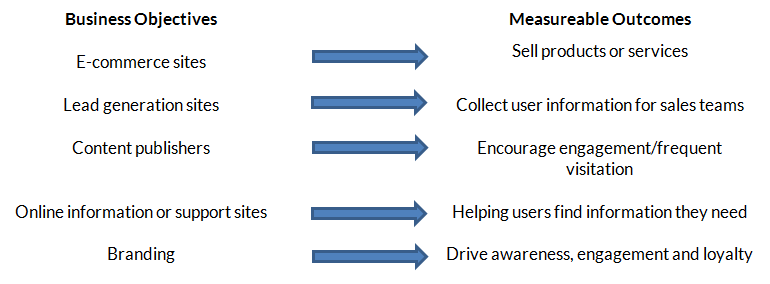An Intro to Digital Analytics
Many large businesses are familiar with digital analytics and understand the importance of having a measurement tool for their website, such as Google Analytics. Most often, large companies have a development team that sets up a process of collecting data from their website. But, if you are a small to mid-sized business and are new to the idea of tracking your website’s performance, the terms and concepts of digital analytics can be overwhelming.
Here are a few things to understand about digital analytics that can help you get started!
What is digital analytics?
If your business has a website, it is imperative to implement a tool to measure digital analytics. Google Analytics, in particular, is an example of a digital analytics tool that any business can use to collect and transform website data into useful reports. Avinash Kaushik, a Digital Marketing Evangelist for Google, describes digital analytics as “the analysis of qualitative and quantitative data from your business and the competition to drive a continual improvement of the online experience that your customers and potential customers have which translates to your desired outcomes (both online and offline).”
Data gathered through digital analytics
There are several important components to the above statement. Quantitative data, which is data that can be counted or measured, has been collected for many years through tools like Google Analytics. More recently, qualitative data is now collected from mobile apps, cloud-point-of-sale-systems, customer relationship management systems and video game consoles. Qualitative data answers the why and this data is not numeric. Through qualitative data, a business would be able to learn more about a customer’s needs and if they were able to provide those needs.
Measuring business objective
Measuring desired outcomes is one of the most important first steps when implementing digital analytics and must be completed before implementing any tool such as Google Analytics. It is fine to collect data from your website, but it is irrelevant to collect information that is not important to your business objectives.
To determine the desired outcomes for a business, you must first create a measurement plan for your company. This will determine what your ultimate business objectives are and how to measure those outcomes. Businesses should not skip this step because important information is discovered when business objectives and their respective outcomes are set. There are five common business objectives for the online world:

There are key actions, such as contact forms or purchases, which users perform on a business website or mobile application. Because these actions relate back to the businesses objectives, we count them as conversions. Conversions can be achieved on a macro or micro level. By determining what your common business objectives are for your website, you are better able to determine measureable outcomes for success.
Set the plan into action
Once business objectives are set, the plan of tracking this information can begin. In order to track data defined by your business objectives, specific code snippets need to be added to the website. To collect information, Google Analytics tracks interactions on a website using a small piece of JavaScript code. JavaScript is a dynamic programming language, commonly used as a part of web browsers such as Chrome, Firefox, Safari or Internet Explorer. We commonly refer to this specific code as a tracking code, tagging or Google Analytics code. Google recommends this specific code be placed on every page you want to track.
The following is an example of a basic Google Analytics tracking code:
<script>
(function(i,s,o,g,r,a,m){i['GoogleAnalyticsObject']=r;i[r]=i[r]||function(){
(i[r].q=i[r].q||[]).push(arguments)},i[r].l=1*new Date();a=s.createElement(o),
m=s.getElementsByTagName(o)[0];a.async=1;a.src=g;m.parentNode.insertBefore(a,m)
})(window,document,'script','//www.google-analytics.com/analytics.js','ga');
ga('create', 'UA-45229916-1', 'auto');
ga('send', 'pageview');
</script>
Implementing this code is the most common way of tracking interactions performed on a website, although there are other tools, such as Google Tag Manager. When a user arrives on a website, the JavaScript code begins collecting information about how the user interacts with the site.
There are a few pieces of information the JavaScript code can collect:
- Information from the website itself, like the URL of the pages the user is viewing
- Information from the user’s browser
- Language of the browser
- Browser name
- Device and operating system used to access the site
- Information about the user’s session
- Acquisition of the user such as direct traffic, organic traffic or referral traffic
- Average time on page
- Average session duration
Improve your plan
Once business objectives and measurements are outlined and JavaScript code is created and implemented on the website, you will be able to begin reporting, analyzing and refining the strategy. It is important to understand that the most central part of digital analytics is focusing on the customer. By anticipating at what point a customer becomes aware of your business and how soon they will make a purchase, you will be able to create more effective business objectives that lead to measurable outcomes.
If you are interested in digital analytics for your business website, please contact us.

